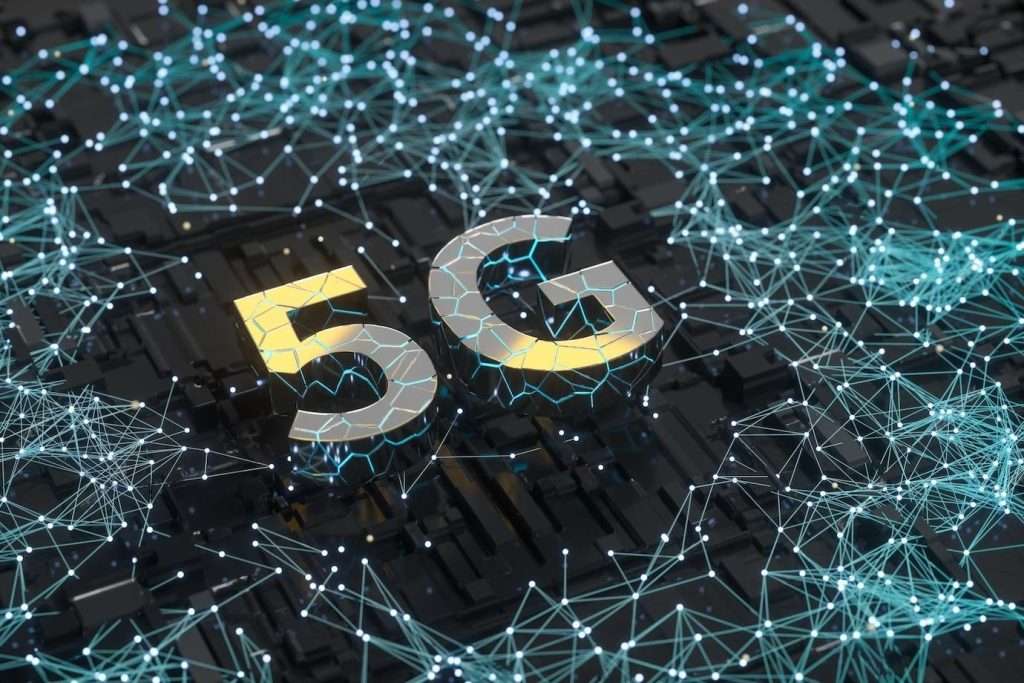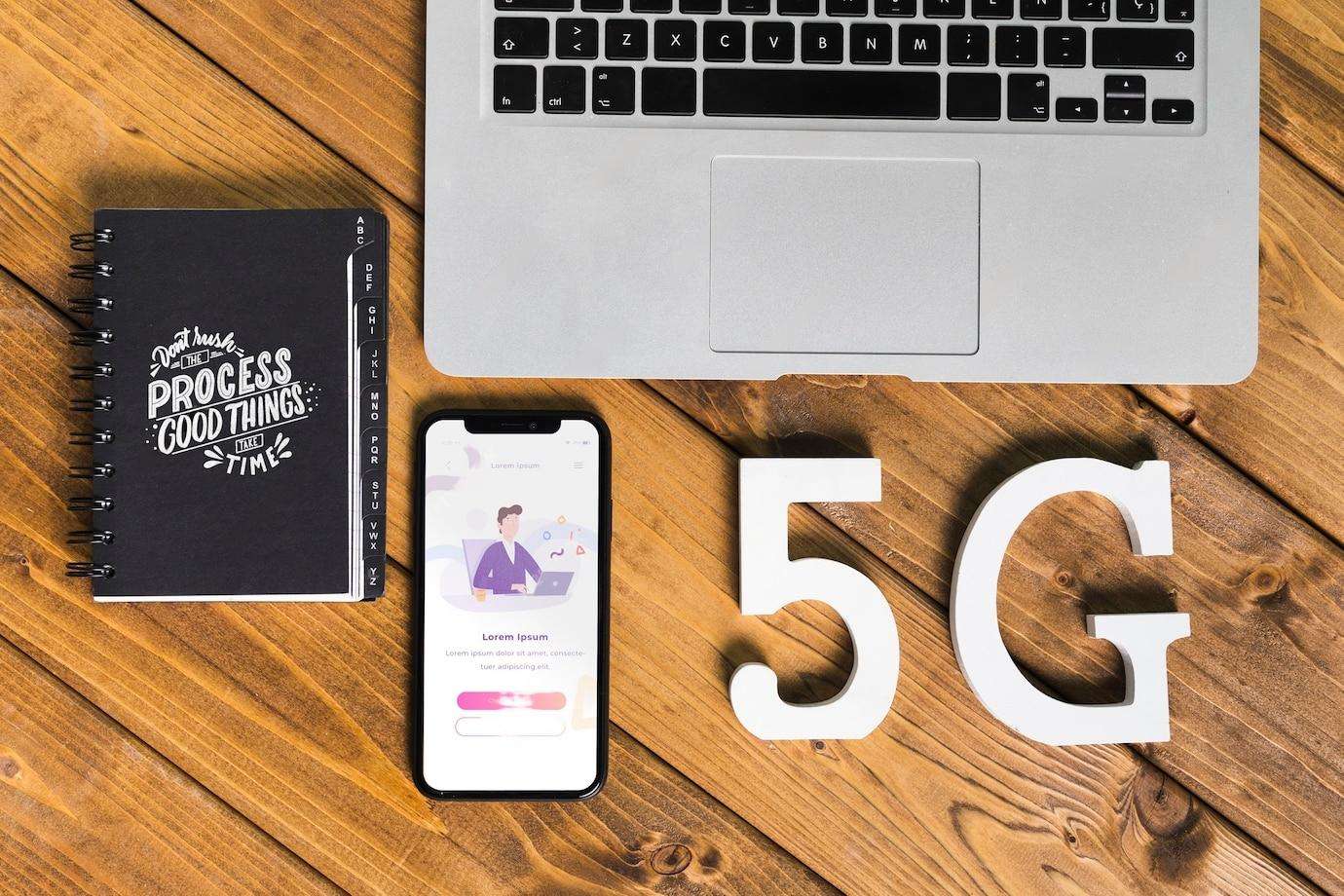In the ever-evolving digital landscape, small businesses are constantly on the lookout for new ways to stay competitive. In recent years, two technologies have emerged as game-changers: the Internet of Things (IoT) and 5G. These innovations are not just buzzwords; they represent real, tangible opportunities for small businesses to grow, optimize operations, and connect with customers like never before.
But let’s be real: for many small business owners, the terms “IoT” and “5G” might feel like just another set of tech jargon. What do they really mean? How can these technologies, which sound so advanced and potentially expensive, be accessible and beneficial for a small business? This article will break down the complexities, dispel the myths, and offer practical, affordable strategies for leveraging IoT and 5G to grow your business.
Why Small Businesses Should Care About IoT and 5G
It’s easy to assume that IoT and 5G are technologies best left to large corporations with deep pockets. However, the reality is quite the opposite. These technologies are not just for tech giants; they are incredibly relevant and increasingly accessible for small businesses. Here’s why:
- Improved Operational Efficiency: IoT devices can help small businesses automate routine tasks, monitor operations in real-time, and optimize resource use. For example, a small retail store could use IoT sensors to manage inventory levels, reducing the risk of overstocking or stockouts.
- Enhanced Customer Experience: With 5G, small businesses can offer faster and more reliable services. For instance, a café could provide customers with a seamless Wi-Fi experience, while a local delivery service could use real-time tracking to keep customers informed.
- Cost-Effective Solutions: The costs of IoT devices and 5G services have been decreasing, making them more affordable for small businesses. Moreover, the return on investment (ROI) from these technologies can be significant, often paying for themselves through efficiency gains and improved customer satisfaction.
- New Revenue Streams: IoT can open up new opportunities for small businesses to create additional revenue streams. For example, a small manufacturer could offer predictive maintenance services to clients by using IoT sensors to monitor the health of equipment.
Affordable IoT Strategies for Small Businesses
Now that we’ve established why IoT and 5G are important for small businesses, let’s explore some affordable strategies for integrating IoT into your business.
1. Start with Low-Cost IoT Devices
You don’t need to invest in expensive, complex IoT systems to get started. There are plenty of low-cost IoT devices available that can offer significant benefits.
- Smart Lighting: Investing in smart lighting can reduce energy costs by adjusting the brightness based on occupancy and natural light. Brands like Philips Hue offer affordable options that can be easily installed and controlled via a smartphone app.
- Smart Thermostats: A smart thermostat, such as Google Nest, can learn your heating and cooling preferences and adjust accordingly, saving energy and reducing utility bills. For a small office, this could result in significant savings over time.
- Security Cameras: IoT-enabled security cameras can help protect your business premises. These cameras can be accessed remotely via your smartphone, allowing you to monitor your business from anywhere.
- Asset Tracking: If your business involves managing inventory or valuable assets, consider using IoT-based asset tracking systems. These devices can help you keep track of inventory levels, reduce losses, and improve supply chain efficiency.
2. Implement Predictive Maintenance
For businesses that rely on machinery or equipment, predictive maintenance is one of the most valuable applications of IoT. Predictive maintenance uses IoT sensors to monitor equipment in real-time and predict when maintenance is needed. This helps prevent costly breakdowns and downtime.
For example, if you run a small manufacturing operation, you can install IoT sensors on your machines to monitor parameters such as temperature, vibration, and pressure. The data collected by these sensors can be analyzed to predict when a machine is likely to fail, allowing you to perform maintenance before a breakdown occurs.
The best part? You don’t need to be a tech expert to set this up. There are companies that offer IoT-based predictive maintenance solutions tailored for small businesses. These services typically involve a subscription model, making it affordable to get started.
3. Optimize Supply Chain Management
IoT can significantly improve supply chain management by providing real-time visibility into every stage of the process. Small businesses can use IoT to monitor the location, condition, and movement of goods throughout the supply chain.
For instance, if you’re a small business that imports goods, IoT-enabled sensors can monitor the temperature and humidity levels of your products during transit. This ensures that perishable goods arrive in optimal condition, reducing waste and increasing customer satisfaction.
Moreover, IoT can help streamline logistics by providing real-time tracking information. This allows businesses to optimize routes, reduce delivery times, and improve overall efficiency.
4. Enhance Customer Engagement
IoT can also be used to create more personalized and engaging customer experiences. By collecting data on customer behavior and preferences, small businesses can tailor their offerings to meet individual needs.
For example, if you own a retail store, you can use IoT-enabled beacons to send personalized offers and discounts to customers as they walk through your store. These beacons can detect when a customer is near a specific product and send a relevant promotion to their smartphone, increasing the likelihood of a sale.
Additionally, IoT can be used to create more interactive experiences. For example, a clothing store could use smart mirrors that allow customers to virtually try on outfits. These mirrors can be connected to an app that provides personalized recommendations based on the customer’s preferences.
Affordable 5G Strategies for Small Businesses
While IoT devices can provide a wealth of data, 5G ensures that this data can be transmitted quickly and efficiently. Here are some ways small businesses can leverage 5G to enhance their operations.

1. Upgrade Your Connectivity
One of the most immediate benefits of 5G is its ability to provide faster and more reliable internet connections. For small businesses, this means faster download and upload speeds, lower latency, and the ability to connect more devices simultaneously.
For instance, if you run a small marketing agency, upgrading to 5G can significantly improve your team’s productivity by enabling faster file transfers, smoother video conferencing, and more efficient collaboration on cloud-based platforms.
The good news is that upgrading to 5G doesn’t have to be expensive. Many telecom providers offer affordable 5G plans specifically designed for small businesses. Additionally, 5G routers and modems are becoming increasingly affordable, making it easier to upgrade your network without breaking the bank.
2. Explore New Revenue Opportunities
5G opens up new possibilities for small businesses to create innovative products and services. With 5G’s low latency and high-speed connectivity, businesses can explore new revenue streams that were previously out of reach.
For example, if you run a small tech company, 5G could enable you to develop and offer new services such as real-time video analytics, remote monitoring, or augmented reality (AR) experiences. These services could be offered on a subscription basis, providing a steady stream of recurring revenue.
Another example could be a small healthcare practice using 5G to offer telemedicine services. With 5G’s high-speed connectivity, doctors can conduct virtual consultations with patients, review medical images in real-time, and collaborate with specialists from around the world.
3. Optimize Remote Work
The COVID-19 pandemic has accelerated the trend towards remote work, and 5G can play a crucial role in supporting this shift. With 5G, small businesses can provide their remote employees with the same level of connectivity and performance they would have in the office.
For example, a small law firm could use 5G to enable seamless video conferencing and collaboration among its remote staff. This ensures that employees can stay connected and productive, regardless of their location.
Additionally, 5G can enable remote employees to access cloud-based applications and services with minimal latency. This is particularly important for businesses that rely on real-time data, such as financial services or customer support.
4. Enhance Security
As small businesses increasingly rely on IoT and 5G, it’s important to ensure that their data is secure. Fortunately, 5G offers several security enhancements that can help protect your business from cyber threats.
One of the key security features of 5G is network slicing. This allows businesses to create virtual networks that are isolated from the public internet, providing an extra layer of security. For example, a small business could create a private network for its IoT devices, reducing the risk of unauthorized access.
Moreover, 5G also supports advanced encryption techniques, making it more difficult for hackers to intercept data. This encryption ensures that sensitive information, such as customer data or business operations, remains secure even as it is transmitted over the network.
Another important aspect of 5G security is its ability to support edge computing. With edge computing, data is processed closer to where it is generated, rather than being sent to a centralized data center. This not only reduces latency but also limits the exposure of data to potential cyber threats during transmission. For small businesses, this means faster, more secure processing of critical information, particularly for operations involving IoT devices.
Real-Life Success Stories: Small Businesses Leveraging IoT and 5G
Understanding how IoT and 5G can benefit your small business is crucial, but seeing how others have successfully implemented these technologies can provide valuable insights and inspiration. Here are a few real-life examples of small businesses that have embraced IoT and 5G to fuel their growth.
1. The Smart Café
A small café in a bustling city center wanted to stand out in a competitive market by offering an exceptional customer experience. The owner invested in IoT technology, starting with smart lighting and thermostats to create a comfortable and energy-efficient environment. But the real game-changer was the implementation of IoT-enabled beacons that interacted with customers’ smartphones.
When regular customers entered the café, the beacons would automatically send personalized drink recommendations based on their previous orders. Additionally, the café utilized 5G connectivity to offer high-speed Wi-Fi, ensuring customers could enjoy a seamless online experience while they sipped their coffee. The result? Increased customer loyalty, longer stays, and higher sales.
2. A Local Delivery Service Goes High-Tech
A small local delivery service was struggling to compete with larger, more established companies. The owner knew they needed to offer something unique to capture the attention of customers. By adopting IoT devices for real-time tracking and route optimization, the delivery service significantly improved its efficiency.
The integration of 5G technology allowed for instantaneous updates on delivery status, which were shared directly with customers via a mobile app. This not only improved customer satisfaction but also reduced fuel costs and delivery times, giving the small business a competitive edge in the market.
3. Small-Scale Manufacturing with Big Ideas
A small manufacturing company producing custom metal parts faced challenges with equipment downtime, which was costly and disruptive. The company implemented IoT sensors on its machines to monitor performance and predict when maintenance was needed. This predictive maintenance approach drastically reduced unplanned downtime and extended the lifespan of their equipment.
Additionally, the company used 5G connectivity to ensure that data from these sensors was transmitted and analyzed in real-time, allowing for immediate action if any issues were detected. This combination of IoT and 5G not only improved operational efficiency but also allowed the business to take on more orders, confident in the reliability of their equipment.
Challenges and Considerations
While the benefits of IoT and 5G for small businesses are clear, it’s important to acknowledge and address the challenges that come with adopting these technologies.
1. Initial Investment Costs
While IoT devices and 5G technology have become more affordable, there is still an initial investment required. Small businesses need to carefully consider the costs and potential return on investment. However, as seen in the examples above, the long-term benefits—such as cost savings, increased efficiency, and enhanced customer experiences—often outweigh the initial expenditure.
To mitigate these costs, small businesses should start small. Begin with affordable IoT devices and gradually scale up as you see the benefits. Many providers also offer financing options or subscription models that spread the cost over time.
2. Data Privacy and Security
With the increased connectivity that IoT and 5G provide, data privacy and security become critical concerns. Small businesses must ensure they are protecting their customers’ data and complying with relevant regulations.
It’s essential to work with trusted IoT and 5G providers who offer robust security features. Additionally, businesses should implement best practices, such as regular software updates, strong encryption, and secure network configurations, to safeguard their data.
3. Integration with Existing Systems
Integrating new IoT devices and 5G technology with existing systems can be a challenge, especially for businesses with legacy infrastructure. It’s important to plan the integration carefully, ensuring that new technology complements and enhances your current operations.
Working with experienced IT professionals or consulting with vendors who specialize in small business solutions can help smooth the integration process and minimize disruptions.
Future Trends: What’s Next for IoT and 5G in Small Businesses?
As IoT and 5G continue to evolve, small businesses will have even more opportunities to leverage these technologies for growth. Here are a few trends to keep an eye on:
1. Increased Adoption of AI and Machine Learning
As IoT devices collect more data, the integration of AI and machine learning will become increasingly important. These technologies can analyze vast amounts of data to provide actionable insights, automate decision-making, and further enhance operational efficiency. For small businesses, this means smarter, more responsive systems that can adapt to changing conditions in real-time.
2. Expansion of Edge Computing
Edge computing, which processes data closer to the source, will become more prevalent as 5G networks expand. For small businesses, this means faster data processing, reduced latency, and improved security. This will be particularly beneficial for businesses that rely on real-time data, such as those in manufacturing, retail, or logistics.
3. Greater Focus on Sustainability
Sustainability is becoming a key consideration for businesses of all sizes. IoT and 5G can play a significant role in helping small businesses reduce their environmental impact. For example, IoT sensors can monitor energy use and optimize resource consumption, while 5G can support more efficient supply chains. As consumers increasingly prefer businesses that prioritize sustainability, adopting these technologies can also enhance your brand’s reputation.
4. Customization and Personalization
As IoT and 5G technology become more advanced, small businesses will have the ability to offer highly customized and personalized experiences to their customers. Whether it’s through personalized marketing, tailored product recommendations, or unique customer interactions, these technologies will allow businesses to connect with their customers on a deeper level, fostering loyalty and driving growth.
Conclusion: Embracing IoT and 5G for Sustainable Growth
IoT and 5G are not just buzzwords—they represent a tangible opportunity for small businesses to innovate, compete, and grow. By starting small, focusing on practical applications, and being mindful of costs and security, even the smallest businesses can leverage these powerful technologies to improve efficiency, enhance customer experiences, and explore new revenue streams.
The journey to adopting IoT and 5G may seem daunting, but as demonstrated by the real-life success stories shared in this article, the rewards can be substantial. As these technologies continue to evolve, the potential for small businesses to harness their power will only grow, making now the perfect time to start exploring how IoT and 5G can transform your business for the better.
By staying informed, planning strategically, and embracing the possibilities, small businesses can ensure they’re not just keeping up with the digital age but thriving in it. The future of business is connected, fast, and smart—are you ready to be a part of it?















